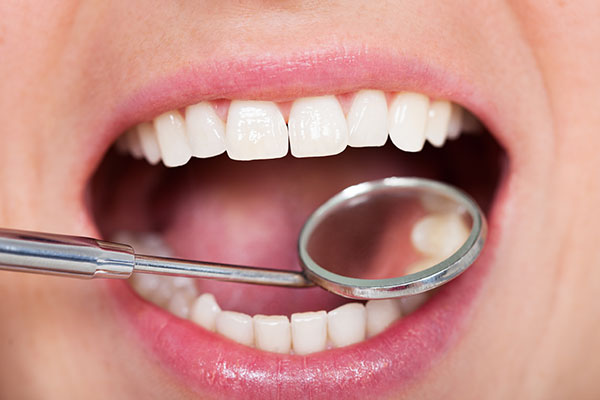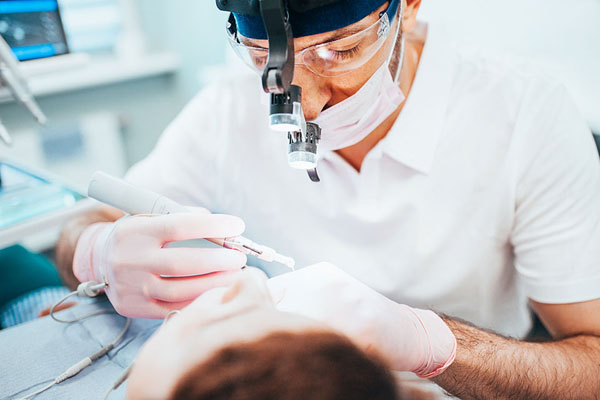The Dental Fillings Process
Receiving Your Dental Filling at Al Villalobos, DMD, PA
A healthy smile not only contributes to our overall well-being but also enhances our confidence and self-esteem. Dental fillings play a crucial role in restoring both the functionality and aesthetics of damaged teeth, enabling individuals to enjoy a pain-free and beautiful smile. Whether it’s treating small cavities (dental caries) or restoring a larger area of tooth decay, dental fillings have become a routine procedure, ensuring optimal oral health and dental longevity.
To learn more about dental fillings, contact our Jupiter dentist by calling (561) 744-0677 to set up an appointment.

The Dental Filling Process
The dental filling procedure may change for you depending on the type of dental filling material, such as amalgam fillings or gold filings, you’re receiving.
Examination and Diagnosis
Our Jupiter dentist begins by examining the tooth and taking X-rays to assess the extent of the damage. The X-rays taken will provide a detailed view of the teeth and can reveal cavities between teeth or beneath the surface. Digital imaging techniques, like intraoral cameras, may also be used to capture detailed images of the affected tooth.
They’ll ask about your symptoms, such as tooth sensitivity and pain. Based on the findings, our dentist will determine if a dental filling is necessary.
Numbing the Area
To begin the cavity-filling process, our dentist will administer a local anesthetic to numb the area around the affected tooth. This ensures that the patient remains comfortable throughout the process.
In most cases, a rubber dam or cotton rolls will be used to isolate the tooth being treated. This keeps the tooth dry and prevents contamination from saliva.
Removing the Decay
Once the area is numbed, Dr. Al Villalobos will use specialized dental instruments to carefully remove the decayed portion of the tooth. The area is then thoroughly cleaned to eliminate any bacteria or debris, creating a suitable surface for the filling material to adhere to.
Preparing the Tooth
In some cases, your dentist may etch the tooth surface with a mild acid to improve the bonding between the tooth and the filling material. This step helps ensure a secure and long-lasting bond.
Filling Placement
Once the tooth is prepared, the chosen filling material is applied in layers. For composite fillings, the material is applied incrementally and hardened using a special light. The dentist sculpts and shapes the filling to match the natural contours of the tooth, ensuring proper functionality and aesthetics.
Bite Adjustment and Polishing
After the filling material has hardened, the dentist checks the patient’s bite and makes any necessary adjustments to ensure proper alignment. The filling is then polished, providing a smooth surface that feels natural within the mouth.

Aftercare
After your cavity-filling procedure, it’s essential to follow proper aftercare instructions to ensure a successful recovery and prolong the life of your filling. Here are some tips:
- Sensitivity and Discomfort: It’s common to experience some sensitivity to hot or cold temperatures after the procedure. This sensitivity usually subsides within a few days to a week. Over-the-counter pain relievers can help manage any discomfort.
- Oral Hygiene: Maintain good oral hygiene by brushing and flossing regularly, paying special attention to the filled tooth and surrounding area to prevent further decay.
- Avoid Hard Foods: For the first few days, avoid chewing on hard or sticky foods that could dislodge or damage the new filling.
- Follow-up Appointments: Your dentist may recommend a follow-up appointment to ensure the filling is functioning correctly and to address any concerns or issues that may arise.
Frequently Asked Questions
During the dental filling process, your dentist will administer a local anesthetic to numb the area being treated. This ensures that you don’t experience any pain or discomfort during the procedure. However, some patients may feel slight pressure or sensitivity during the removal of decayed material.
A single dental filling appointment can be completed in 30 minutes to an hour. The duration of a dental filling procedure can vary depending on the size and location of the cavity being treated, as well as the type of filling material used. More extensive cavities or complicated cases may require multiple appointments or additional time for preparation and placement of the filling.
While dental fillings are designed to be long-lasting, there’s a possibility of a filling becoming loose or falling out over time. This can occur due to factors such as tooth decay, damage to the filling material, or excessive wear and tear. If you notice a filling becoming loose or dislodged, it’s important to contact your dentist as soon as possible to prevent further issues and address the problem promptly.
Schedule a Dental Appointment Today!
The dental filling procedure is vital in dentistry as it restores damaged teeth and promotes oral health. With various tooth filling options available, our skilled dentist can precisely place durable and aesthetically pleasing materials. By prioritizing regular check-ups and addressing cavities promptly, individuals can maintain a healthy smile and prevent further complications.
If you’re located in the Jupiter area, including West Palm Beach’s Northside areas like Hobe Sound and Tequesta, contact our practice at (561) 744-0677 to schedule a consultation or appointment for dental fillings. Our skilled dentist and dental team at Al Villalobos, DMD, PA, are dedicated to providing exceptional dental care and helping you achieve optimal dental health.
